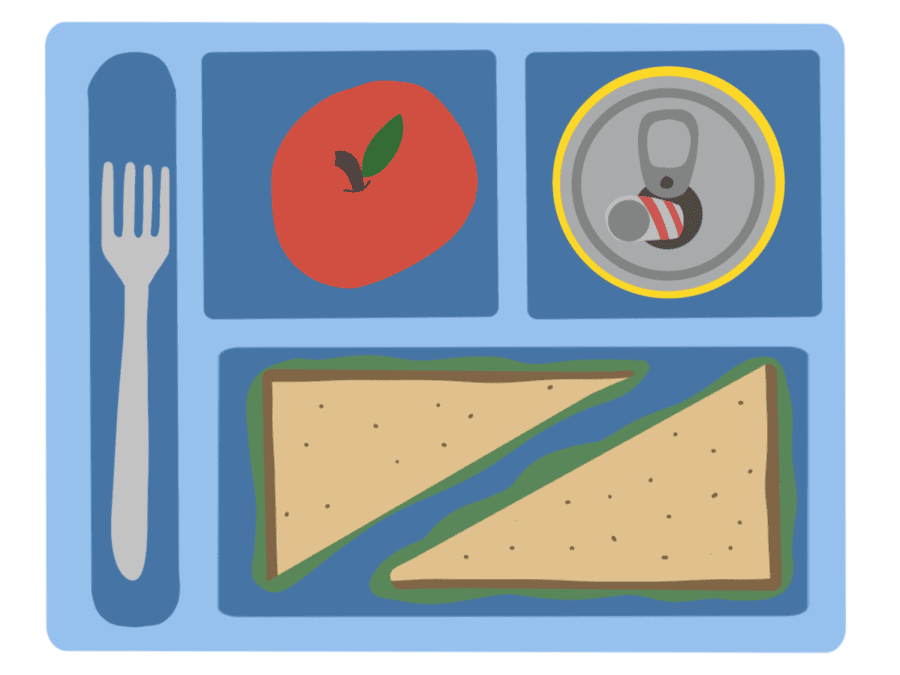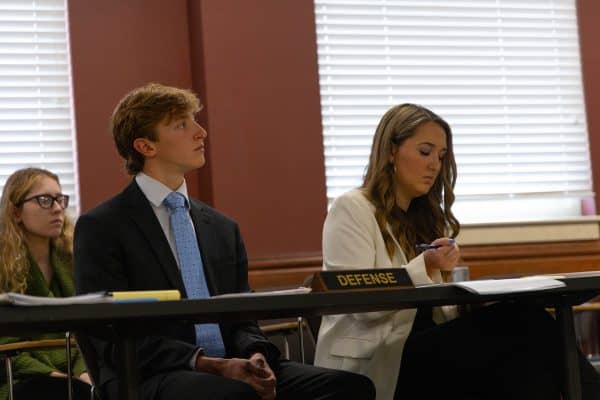How college students can find balanced nutrition
March 2, 2022
College students are often busy with classes, friends and extracurriculars, often placing nutrition on the back burner. Students either believe it to be impossible to eat a healthy, balanced diet while in college, or they simply do not know how.
According to the fall 2021 American College Health Association report, 39% of college students said they believed their overall health to be very good, but 59% reported that they ate on average less than 1 cup of vegetables each day — far lower than the 2.5-3 cups of vegetables recommended for college-age people based on the Dietary Guidelines for Americans.
Sheena Gregg, a licensed dietitian in the Department of Health Promotion and Wellness, said she has made it her mission to inform UA students of ways they can learn about nutrition.
“We cover key health areas that are very strategic for college students,” Gregg said. “I do a lot of programming on campus related to educating students about healthy eating and having a healthy relationship with food.”
For many students, consistently eating healthy, or consistently eating at all, tends to be a struggle when they are balancing so many other things.
“In the college years, when people are making significant food choices for themselves rather than relying on their parents or guardians, erratic, inconsistent eating patterns is kind of a hallmark of college students and that can be skipping meals,” said Kimberly Stran, a registered dietitian and an assistant professor in the department of human nutrition and hospitality management.
In her doctoral dissertation, Stran researched how caloric numbers on restaurant menus affect college students. Her research showed that although students would read the information, they wouldn’t necessarily choose foods with lower calories.
She said some of these choices may have stemmed from students not understanding how many calories were needed in a daily diet or specific meals, even if the menu does include the average number of calories needed in a human’s diet.
Consuming a certain number of calories, though, is not the only important element of a person’s diet.
Stran said that although intaking enough calories is important, consuming a variety of foods — like fruits, vegetables and lean meats — is equally necessary. However, many nutrients found in these foods are not present in restaurant meals alone.
Morgan Abercrombie, a first-year human nutrition graduate student, said college students can learn how to eat fast food in a healthy way.
“It’s totally fine to include fast food in a well-balanced diet,” Abercrombie said. “It’s just about also having fruits and vegetables. Rather than cutting out things, you are adding fruit and vegetables to what you are already eating.”
Abercrombie said students should not feel ashamed to have snack meals, each of which should include a protein and a carb, throughout the day to intake those necessary nutrients.
“Food is a social experience, so you do not have to feel guilty for eating with friends or viewing it as a pleasure,” Abercrombie said.
These fruits, vegetables and snack meals are easy to make in dorm rooms or apartments because they usually require little cooking, if any at all.
Stran said many students hear nutritional information from external sources, such as roommates, social media or friends, but she recommends students consult a registered dietitian with any nutritional questions they may have.
The Department of Health Promotion and Wellness has started initiatives to assist with the transition into grocery shopping and cooking on your own.
“We do grocery store tours at Publix, both virtually and in person, cooking demos by request for student organizations, and Zoom presentations about intuitive eating and mindful eating,” Gregg said.
UA Health Promotion and Wellness also hosts an Ask the Dietitian program, which allows students to ask a registered dietitian personal questions about their diet, take grocery store tours and watch cooking demonstrations. The division also provides cooking tips on its social media account and in a digital cookbook called “Cooking Through College.”
Gregg and colleagues have, also, created guidebooks that show students around the grocery store, going section by section to incorporate all food groups and sharing tips about everything from picking produce to shopping on a budget.
Alaina McDuffie, a sophomore majoring in public relations, said she often puts off grocery shopping because it’s a hassle and she tends to keep long-lasting foods.
“Since coming to college, eating healthy has been harder because my mom isn’t over my shoulder telling me to eat my vegetables,” McDuffie said.
Many students also struggle with diet culture. Fad diets often cut out entire food groups or limit the hours during which you are allowed to eat.
“This time of the year you have students engaging in questionable diet practices to prepare for spring break,” Gregg said. “I like to work with students about how to approach weight loss and weight management in an appropriate way.”
Fad diets can prevent students from performing their best since they are operating with less vitamins and nutrients than they would have while eating from every food group. These actions can have negative effects both academically and socially.
Gregg often promotes intuitive eating among students.
“It really does go against the grain of diet culture because we’re trying to retrain people to trust their bodies,” Gregg said. “We trained ourselves to not listen to our bodies’ natural hunger, but the thing about intuitive eating is we begin to teach students that it’s okay to trust their cravings.”
Intuitive eating encourages students to put their health first instead of focusing on weight loss.
“I tell students in the same way you would put a test or a discussion post in your planner to section off time in the day to eat and write it down,” Gregg said. “We don’t realize that our brain is one of our hungriest organs, burning over 20% of our daily calories.”
Gregg encourages carrying snacks to avoid going too long without food.
“One of the best ways to be successful is to have a little bit of preplanning at the beginning of your week,” Gregg said.
Abercrombie is also the president of the UA Dietetic Association, a group of dietetic and nutrition students who teach about healthy relationships with food. They often host guest speaking events with experienced registered dietitians who give advice to the future dietitians. This year, the organization partnered with the West Alabama Food Bank and fundraised through percentage nights and volunteer days.
Holly Grof, a registered dietitian and the UA dining services coordinator, wants to make sure all students get to enjoy the social experience of eating by specifically working with students who have food allergies or other dietary restrictions.
“As a dietitian, I want to make sure that everyone is nourished, happy and healthy, and that they have those experiences in the dining hall because not only is it getting your nutrition, it’s also a social experience,” Grof said.
If a student has a medically documented food allergy or a dietary restriction, the student can submit documentation through a special diet accommodation form, which will be reviewed on an individual student basis.
Students who receive accommodations get access through their ACT Card to a food allergy room at Lakeside dining. The room has two distinct sides: one is gluten-free, and the other is allergy-friendly. Students must wash their hands upon entry and wear gloves while preparing their meal inside the room.
Students with accommodations also receive a text-ahead ordering option for the dining hall. This lowers the chance of cross contamination.
Grof said any students with accommodations can contact her if they desire different meal options.
“For a student with food allergies, food can literally kill them, so we take on a responsibility to take care of those students,” Grof said. “We want to make sure they can take full advantage of their meal plan and full advantage of their campus experience.”
UA Student Care and Well-Being also has options for students needing food assistance through their “Got Meals” meal donation program and a food pantry, which is currently taking monetary donations.
Earlier this month, the Student Government Association passed a resolution to let students donate their leftover meal swipes to an online “swipe bank” through the “Got Meals” program, which distributes meal swipes to students based on individual need. Students can then use these meal swipes on their ACT cards at any on-campus dining hall.
Students who would like to request meal swipes through either the “Got Meals” program or the food pantry can submit an online form.
“Nutrition is, I feel, the backbone of good health,” Stran said. “There are so many chronic diseases and things like heart disease, diabetes, and high blood pressure that are influenced by what we eat, and if we can improve the general nutrition status of people around us, that can help reduce that risk of chronic disease.”
This story was published in the Health Edition. View the complete issue here.
Questions? Email the culture desk at [email protected].











